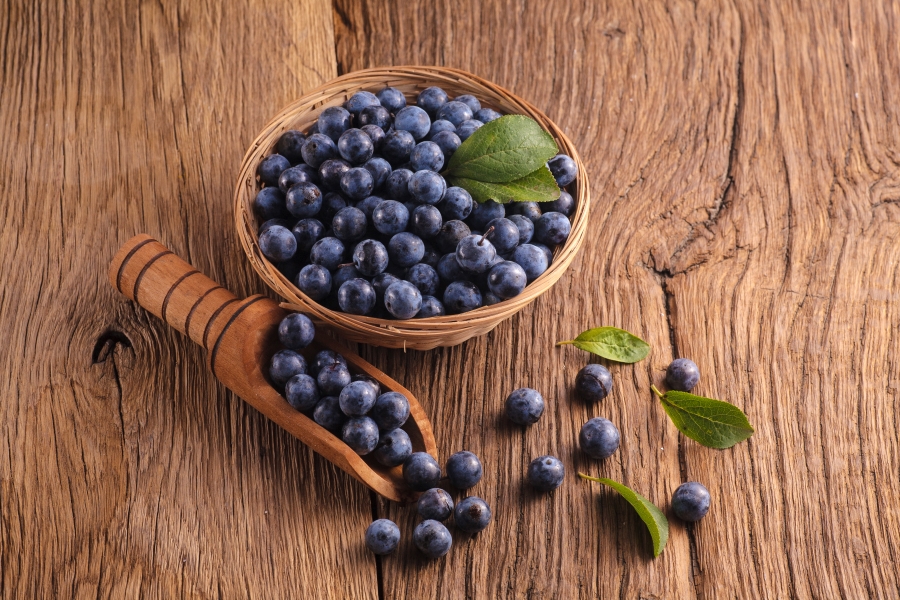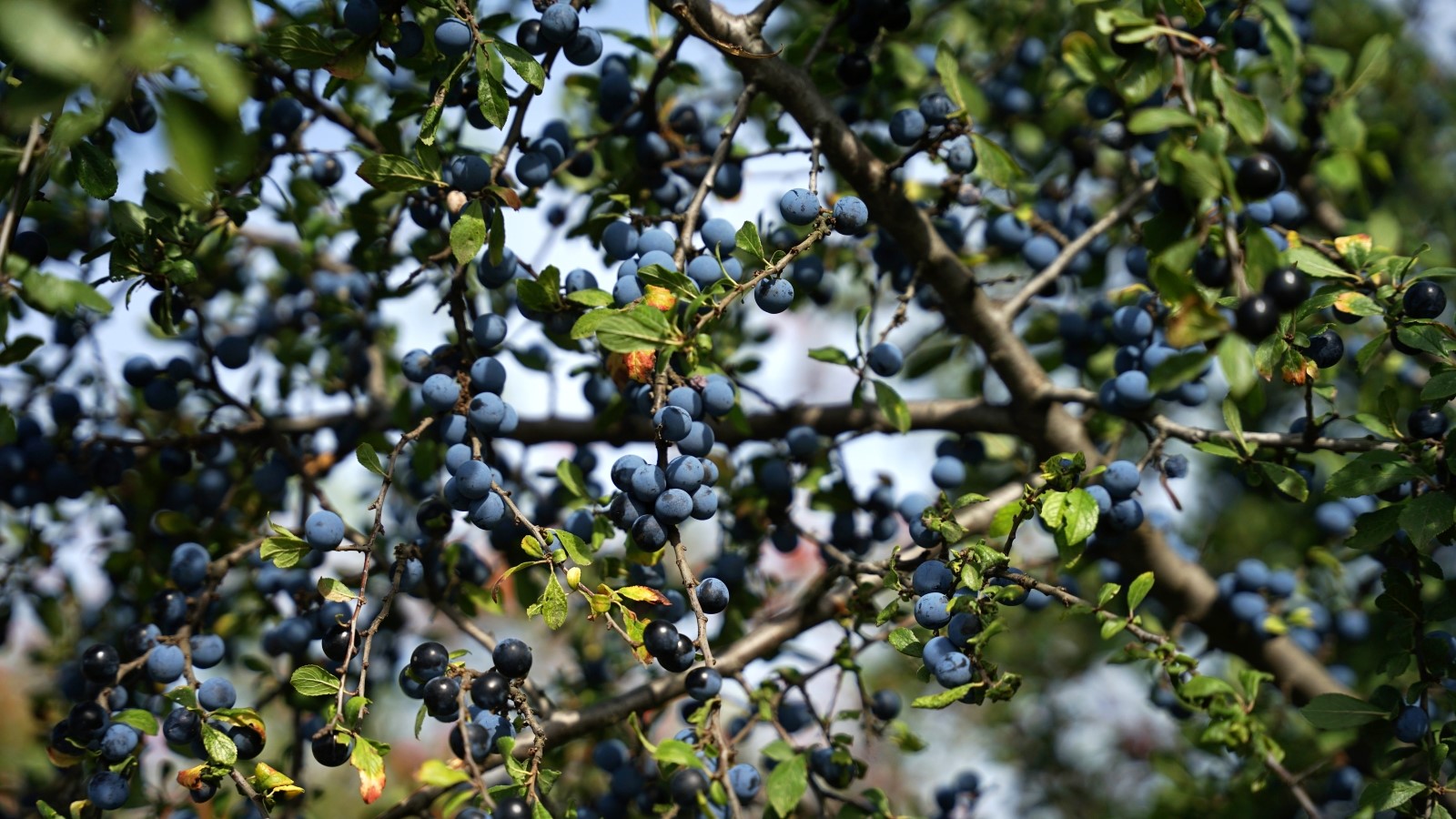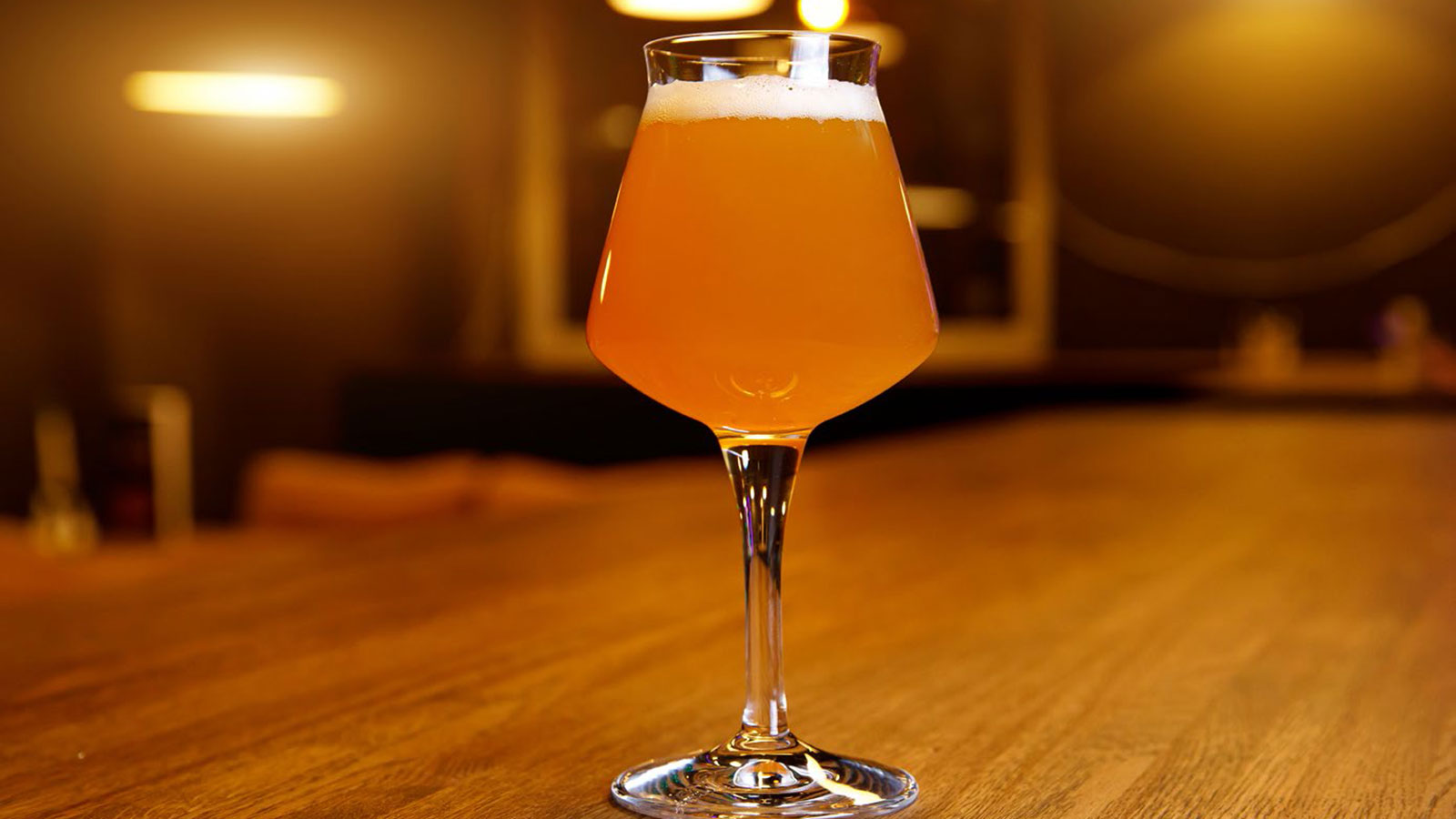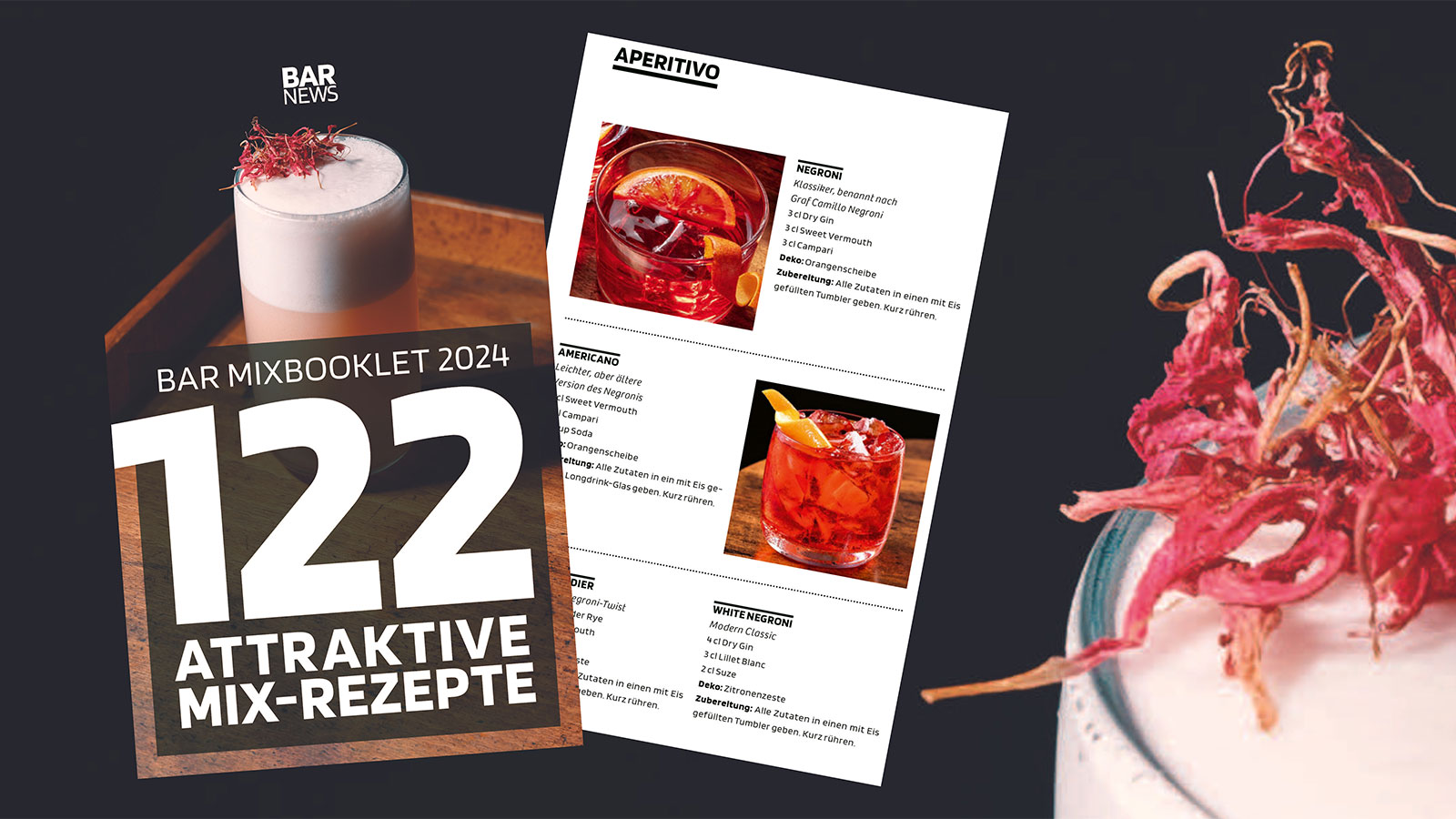Now they hang ripe again at the edge of the forest and in the hedge. The small fruits of the blackthorn, which look more like oversized blueberries than the small wild plums they actually are. Sloes, sloe in English, grow in most regions of Europe and are also consumed in many places. However, the fruits are not really predestined for raw consumption. On the one hand, the ratio of flesh to stone is very small. On the other hand, their high content of tannins leaves a furry, astringent feeling on the tongue. Although this is strongly reduced when the first frosty nights pass over the country in autumn, the fruit is nevertheless better enjoyed in its processed state.
The family membership of plums can be recognized by the skin of the fruit, which has a whitish film. Another indicator is the French name of the fruit. "Prune" refers to the plum, "Prunelle " to the sloe. What is true for the blackthorn is also true for the spirit specialties with sloes. Many countries know sloe liqueurs, such as Pacharán in Spain, or Patxaran in the Basque Country - an aniseed-sloe liqueur. Liqueurs de Prunelle are also produced in France, and even Jägermeister occasionally carried a sloe liqueur in its range with "Schlehenfeuer".
But the most common liqueur is undoubtedly sloe gin. As with most other specialties, sloes are mixed with a spirit and sweetened before bottling. Since the fruit is harvested no earlier than the end of September and must macerate for several weeks, sloe gin is often associated with the Christmas season. Quite a few sloe gin producers therefore also use additional "Christmas" botanicals or a different gin recipe straight away for their products. However, the fruity-light liqueur is also perfect for warm summer evenings.

From the home kitchen to the spirits shelf
Sloe gin was first mentioned in the first half of the 19th century. But several decades would pass before the industry would include the liqueur in its range. Sloe Gin was - similar to Nocino, Röteli and also Umeshu - a specialty, which in most cases each and everyone produced at home. And it goes without saying that one's own home recipe was superior to that of one's neighbor.
Jared Brown, co-founder of Sipsmith and cocktail historian, recommends 250 to 300 grams of sloes for a 70-cl bottle of gin. After a maceration period of two to three months, the liquid is filtered and sweetened with sugar and / or honey as desired. If you do not want to wait for the first frost, put the ripe fruit in the freezer for one to two days.
When harvesting, it becomes clear why the blackthorn also bears the name blackthorn. Because of the sharp boughs, the harvest should be approached carefully. Very few sloe gin producers collect their own sloes, but will buy them. By law, the juice of sloes may be used instead of the fruit. By the way, sloes can also be used to make "false olives " - which is ideal for decorating a sloe gin cocktail.
In Great Britain, in addition to Sloe Gin, Damson Gin is also known. For this, the somewhat larger "Damson Plums" are macerated with gin. These fruits are not the plum variety Damasson rouge, from which the Damassine is distilled in the Jura, but the Kriechen plum or Kriecherl.
Cocktail classic with sloe gin
After the sloe gin was added to the range by British gin producers towards the end of the 19th century, it made it across the pond just in time. Even before Prohibition in the United States, it appeared as a cocktail ingredient in various bar books - and became immortal thanks to the Sloe Gin Fizz.
Other classics combine the sloe liqueur with vermouth or rum. Those who mix with sloe gin should always be aware that it is not a gin, but a liqueur. Not only is Sloe Gin therefore sweeter, but the alcohol content is also lower. The legal minimum is 25 percent by volume. In some drinks, for example, you can replace cherry liqueur with sloe gin. This is a much more similar substitute than a classic London Dry. If you combine Sloe Gin with sugar, other liqueurs or sweetened fillers such as Tonic Water, you should not leave the dosage to chance in any case.
Three cocktail classics with sloe gin
Sloe Gin Fizz
| 5 cl | Sloe Gin |
| 3 cl | Lemon juice |
| 1 | Ex. sugar |
| Fill up soda |
Preparation: Shake ingredients without soda and strain into highball glass. Fill up with soda.
Decoration: Lemon zest
Blackthorn Cocktail
| 3 cl | Sloe Gin |
| 3 cl | Red Vermouth |
| 3 cl | Dry Vermouth |
| 2 Dashes | Orange Bitters |
| 1 Dash | Angostura |
Preparation: mixing glass
Decoration: lemon zest (and a smile)
Singapore Sling (Twist with Sloe Gin)
| 4.5 cl | Gin |
| 1.5 cl | Sloe Gin |
| 1.5 cl | Bénédictine |
| 1.5 cl | Lime |
| Top off soda | |
| 1 Dash | Angostura on Top |
Preparation: Guest glass
Decoration: Cocktail cherry




